 Many people think that when going on a “silent hunt”, you don’t have to worry about poisonous fly agarics in the basket: according to the description, these mushrooms are difficult to confuse with any others, they are painfully remarkable! However, this is only partly true. Red fly agaric, indeed, stand out sharply against the background of all other mushrooms. But gray-pink and panther ones are not so brightly colored, so they are easy to mistake for edible mushrooms.
Many people think that when going on a “silent hunt”, you don’t have to worry about poisonous fly agarics in the basket: according to the description, these mushrooms are difficult to confuse with any others, they are painfully remarkable! However, this is only partly true. Red fly agaric, indeed, stand out sharply against the background of all other mushrooms. But gray-pink and panther ones are not so brightly colored, so they are easy to mistake for edible mushrooms.
The main feature of all types of fly agaric is a sharp difference in appearance in the process of growth. Young mushrooms are stocky and beautiful, resembling mushrooms from afar. But God forbid you confuse them!
Amanitas are inedible and poisonous. With growth, they significantly change their shape into large open umbrellas with thick hats. True, sometimes they write that gray-pink fly agarics are conditionally edible after two or three boilings, but still this is not recommended, since you can confuse them with other poisonous species. June fly agarics grow near paths and in small forest clearings.
You will learn about how different types of fly agaric look like, and where they grow, in this material.
Amanita gray-pink
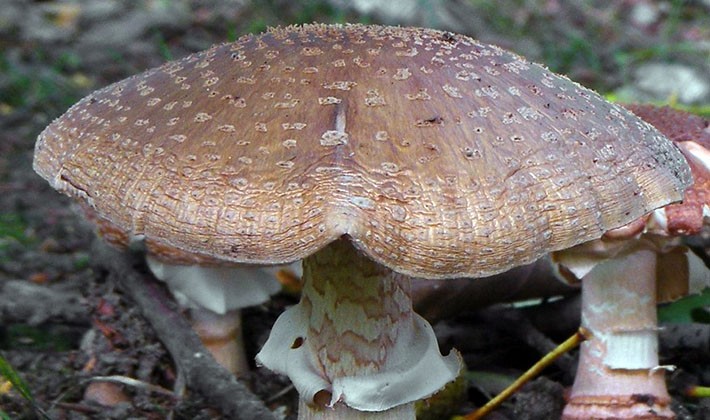
Habitats of gray-pink fly agaric (Amanita rubescens): coniferous and deciduous forests, often along forest paths, grow either in groups or singly.
Season: June-November.
The cap has a diameter of 5-15 cm, sometimes up to 18 cm, at first spherical, later convex and convex-prostrate. A distinctive feature of the species is a pinkish-brown cap with many gray or pinkish spots from large scales, as well as a gray-pink leg with a ring with hanging edges and a thickening at the base, surrounded by the remains of a Volvo.
As you can see in the photo, in this type of fly agaric, the edges of the cap do not have the remains of a bedspread:
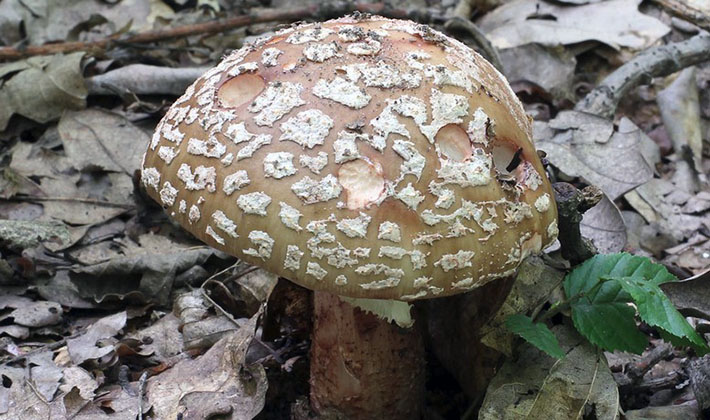
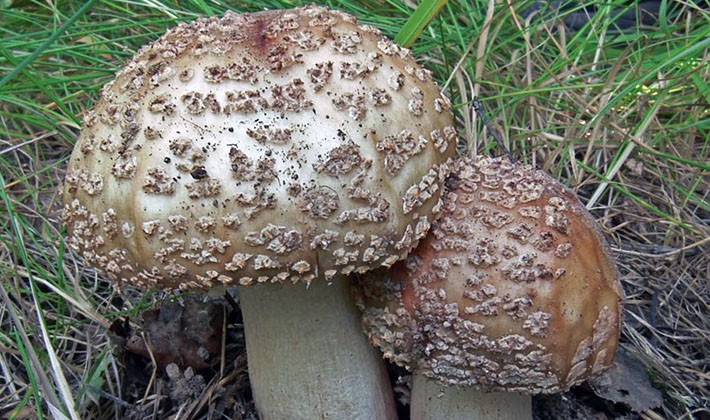
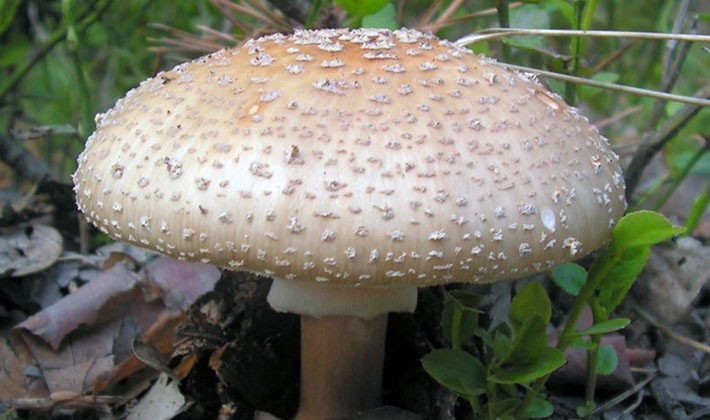
The leg of this type of fly agaric mushroom is long, 5-15 cm tall, 1-3,5 cm thick, white, hollow, later gray or pinkish. The base of the leg has a potato-like thickening up to 4 cm in diameter, on which there are ridges or belts from the remains of the Volvo. On the leg in the upper part there is a large light ring with grooves on the inner surface.
Pulp: white, turns pink or red over time.
The plates are free, frequent, soft, at first white or cream.
Variability. The color of the cap can vary from gray-pink to pinkish-brown and reddish.
Similar types. The gray-pink fly agaric is similar to the panther fly agaric (Amanita pantherina), which is distinguished by a light brown color.
Conditionally edible after boiling at least 2 times with a change of water, after which they can be fried. They have a sharp taste.
Amanita muscaria
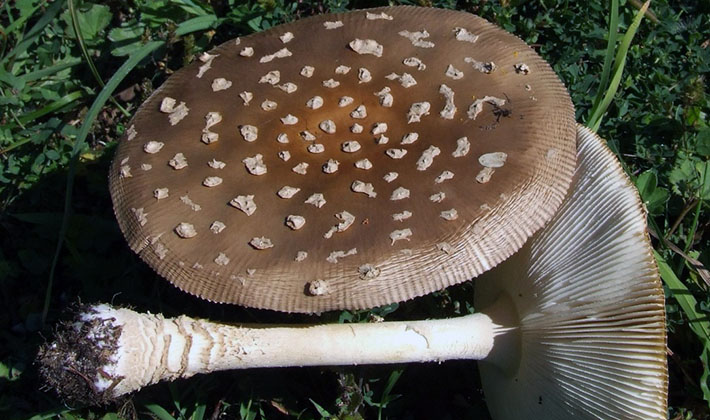
Where do panther fly agarics (Amanita pantherina) grow: coniferous and deciduous forests, grow either in groups or singly.
Season: June-October.
The cap has a diameter of 5-10 cm, sometimes up to 15 cm, at first spherical, later convex or flat. A distinctive feature of the species is the olive-brown or olive color of the cap with white spots from large scales, as well as the ring and the multi-layered Volvo on the leg. The surface of the cap is smooth and shiny. The scales are easily separated, leaving the cap smooth.

The leg is long, 5-12 cm high, 8-20 mm thick, gray-yellowish, with powdery coating. The stalk is thinned above and tuberous-widened near the base with a white multi-layered Volvo. There is a ring on the leg, which disappears over time. The surface of the foot is slightly hairy.
Pulp: white, does not change color, watery, almost odorless and sweetish in taste.

Records are free, frequent, high.
Variability. The color of the cap varies from light brown to gray-olive and light brown.
Similar types. According to the description, this type of fly agaric is similar to the gray-pink fly agaric (Amanita rubescens), which is distinguished by a pinkish-gray cap and a wide ring on the leg.
Poisonous.
Amanita muscaria
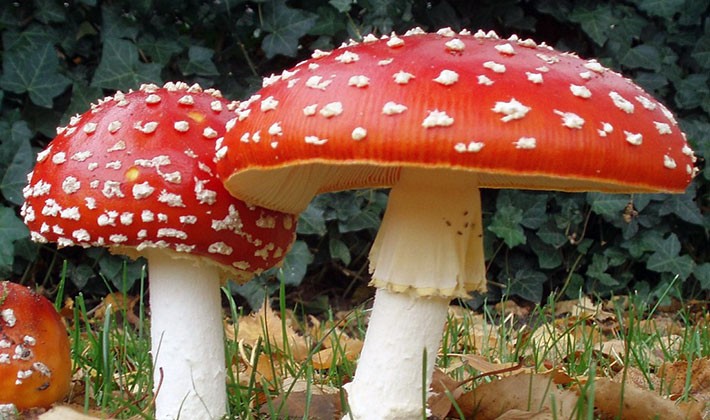
Red fly agaric (Amanita muscaria) are known to all residents since childhood. In September, a huge number of these beauties appear. At first they look like a reddish ball with white dots on the stem. Later they become in the form of an umbrella. They grow everywhere: near towns, villages, in the ditches of dacha cooperatives, on the edges of forests. These mushrooms are hallucinogenic, inedible, but have medicinal properties, but their independent use is illegal.
Habitats: deciduous, coniferous and deciduous forests, on sandy soil, grow either in groups or singly.
When fly agaric grows red: June-October.

The cap has a diameter of 5-15 cm, sometimes up to 18 cm, at first spherical, later convex or flat. A distinctive feature of the species is a bright red hat with characteristic white spots from the scales. The edges are often jagged.
The leg is long, 4-20 cm tall, IQ-25 mm thick, yellowish, with powdery coating. At the base, the leg has a significant thickening up to 3 cm, without volva, but with scales on the surface. On the leg, young specimens may have a ring, which disappears over time.
Pulp: white, then pale yellow, soft with an unpleasant odor.
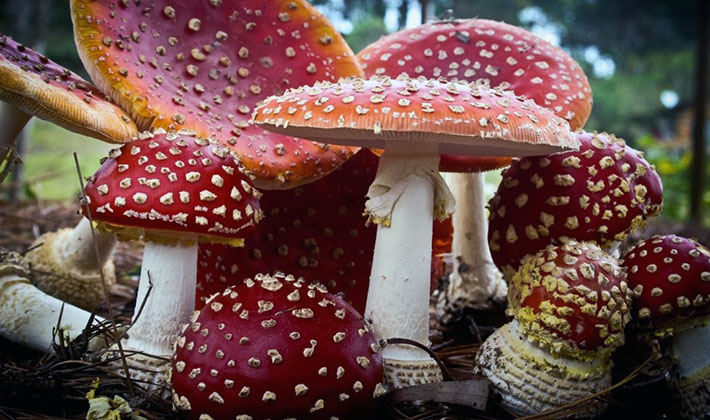
The plates are free, frequent, soft, at first white, later yellowish. Long plates alternate with short ones.
Variability. The color of the cap of inedible fly agaric mushrooms can vary from bright red to orange.
Similar types. The poisonous red fly agaric can be confused with the edible Caesar mushroom (Amanita caesarea), which is distinguished by a bright red or golden-orange hat without white pimples and with a yellow stem.
Poisonous, cause severe poisoning.
See how red fly agarics look in these photos:












